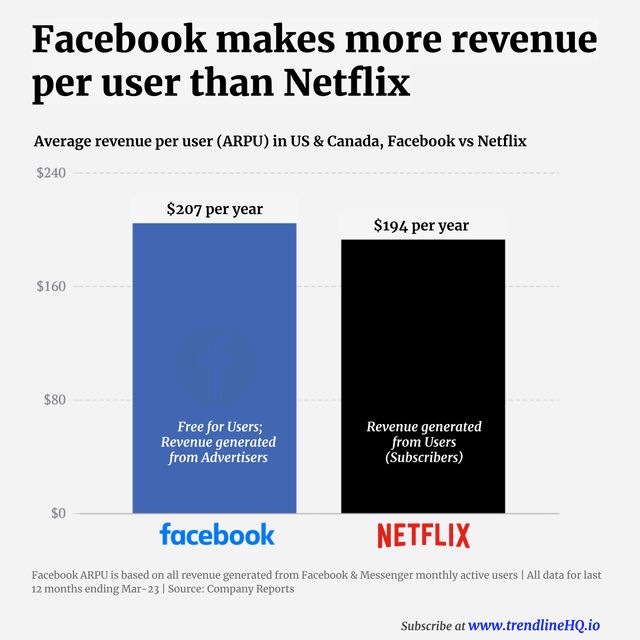A tale of two business models.
Both Facebook (Meta) and Netflix are leading Tech companies. Part of the illustrious FAANG.
However, Facebook’s ARPU (Average Revenue Per User) of $207 is higher than Netflix’s ARPU of $194 even though Facebook is free for users.
How can a social media platform beat out one of the biggest streaming services in the world in terms of revenue per user?
The answer is their different business models and monetization of new features.
Facebook collects data on its users’ behaviors, interests, and preferences, which allows advertisers to target their ads with unprecedented accuracy. This, in turn, leads to higher engagement rates and more revenue for Facebook.
Recently, Meta’s daily active users rose 4% to a better-than-expected 2.04B, and monthly active users were 2.99B, all thanks to Reels. Stories and other imrpoved product features.
On the other hand, Netflix relies primarily on its subscription model for revenue, which doesn’t allow for the same level of targeted advertising. While Netflix has experimented with advertising in the past, its primary focus remains on providing content to its subscribers.
Additionally, Facebook has other revenue streams such as Oculus, its virtual reality platform, and WhatsApp, its messaging app. These platforms also contribute to Facebook’s impressive ARPU.
What are your thoughts on these business model differences?

